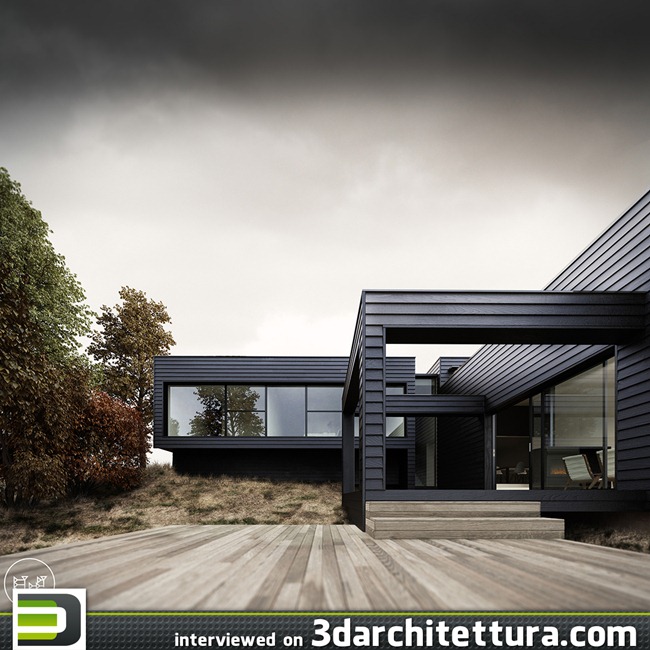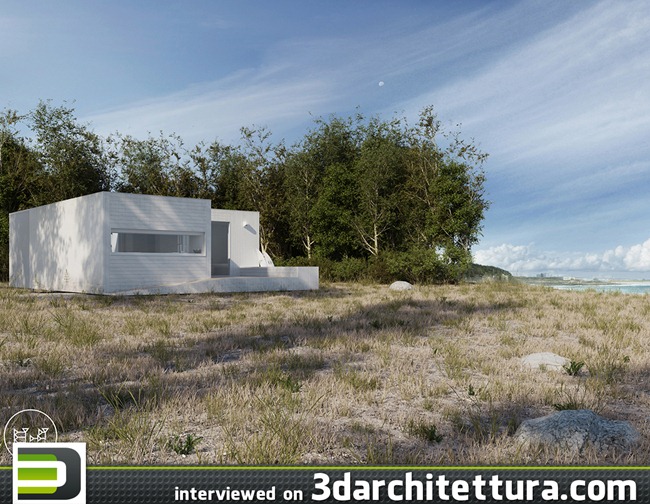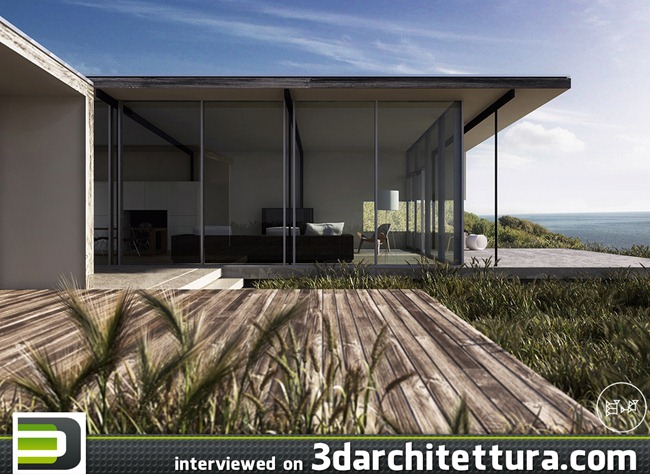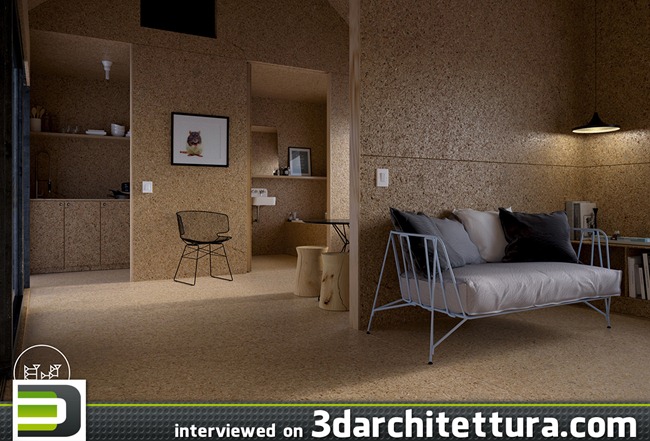Name: Mark Staddon
Age: 35
Job: Architectural Illustrator – Modern Babylon Schiavello
Country: Australia
Web site: http://www.modernbabylon.com.au www.facebook.com/ModernBabylon3D
3DA: Why have you decided to work in 3d-field and when have you started?
MS: When I left school I originally had a career in sales/advertising but in 2006 I decided to study architecture and design which I always had a passion for. It was here that I discovered Arch Vis properly and was immediately drawn to it. I saw some of the amazing works out there at the time (Alex Roman’s Third and The Seventh was a huge inspiration) and realised the potential the software had to really “sell” a concept….and I have been hooked ever since.
3DA: Describe to our readers your usual workflow
MS: I do all of my modelling, texturing and lighting in 3DS Max and utilise plugins like Itoo Forest Pack for vegetation. Unlike most people, I never really use Vray though. I was taught Mental Ray at college and persevered with it for a long time. It was within the last 18 months however that I made the switch to Corona and I have never looked back. For all post production I use Photoshop, including plugins like Magic Bullet, Alienskin and a host of others. I think being good at post production is just as important as understanding 3DS Max (or whatever software you use), but this is something I learnt much later in my career.
3DA: What was most difficult for you when you just started working in 3D? And what is now?
MS: I think everything was difficult starting out, especially when trying to understand and emulate the work of the already established guys/girls in the field. But each project brought new challenges and in turn, new skills. If I had to pick one thing though, it would have been lighting. Lighting is paramount to all good photography and Arch Vis and can be the difference between an ok image and a great one. Now, for me composition and balance is something I really try and consider.
3DA: Looking back on your education process what you would have changed now? And what you consider right and would do exactly the same?
MS: The Arch Vis component of my studies was pretty basic, but that made me have to really search for answers and try lots of scenarios. There were limited online tutorials and forums compared to now and perhaps as a community we held our secrets a little closer than we do now. As much as I would have liked all the answers to be a little more available back then, having to troubleshoot and experiment to resolve issues made the final outcome so much more rewarding. Now, I think the education process is in a really good place. The online community is vast and very constructive, tutorials are easy to find and there are specialised colleges offering really in-depth courses to make breaking into the industry easier…but like anything, it’s what you do when you get there that counts.
3DA: Which was the biggest problem that you faced working on a project and how have you solved it?
MS: TIME. Most of our clients don’t have a real understanding of the process behind taking a concept on paper through to a complete and considered set of images. Last minute revisions are sometimes enough to bring you to your knees but that’s the industry and it’s not going to change anytime soon. Computers get more and more powerful and production times come down which is great, but the process is still quite long and involves lots of late nights to get things done. Coffee, lots of coffee seems to help solve the problem a little too.
3DA: What forecast you can make about the future of 3d-world in general?
MS: I think the world of 3D is more popular now than ever. More and more industries are utilising the skills of 3D artists and the calibre of work has really shot up too. This in turn pushes artists to improve, to look further afield for inspiration and make their work more dynamic. Also, as technology evolves so quickly, we get to use more and more techniques and create complex scenes that 5 years ago simply wouldn’t have been possible for most of us on traditional PC’s. Photorealism with the help of really fantastic advances in software like Corona and Vray3 is getting easier to replicate which means artists can spend more time being creative and exploring new ideas and methods in the creative process…and we are lucky to have some truly creative people in the field to inspire us and make us work harder. The 3D world is expanding…and there is room for everyone.

 Russian
Russian


























